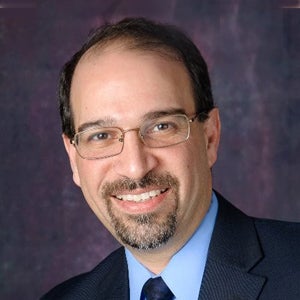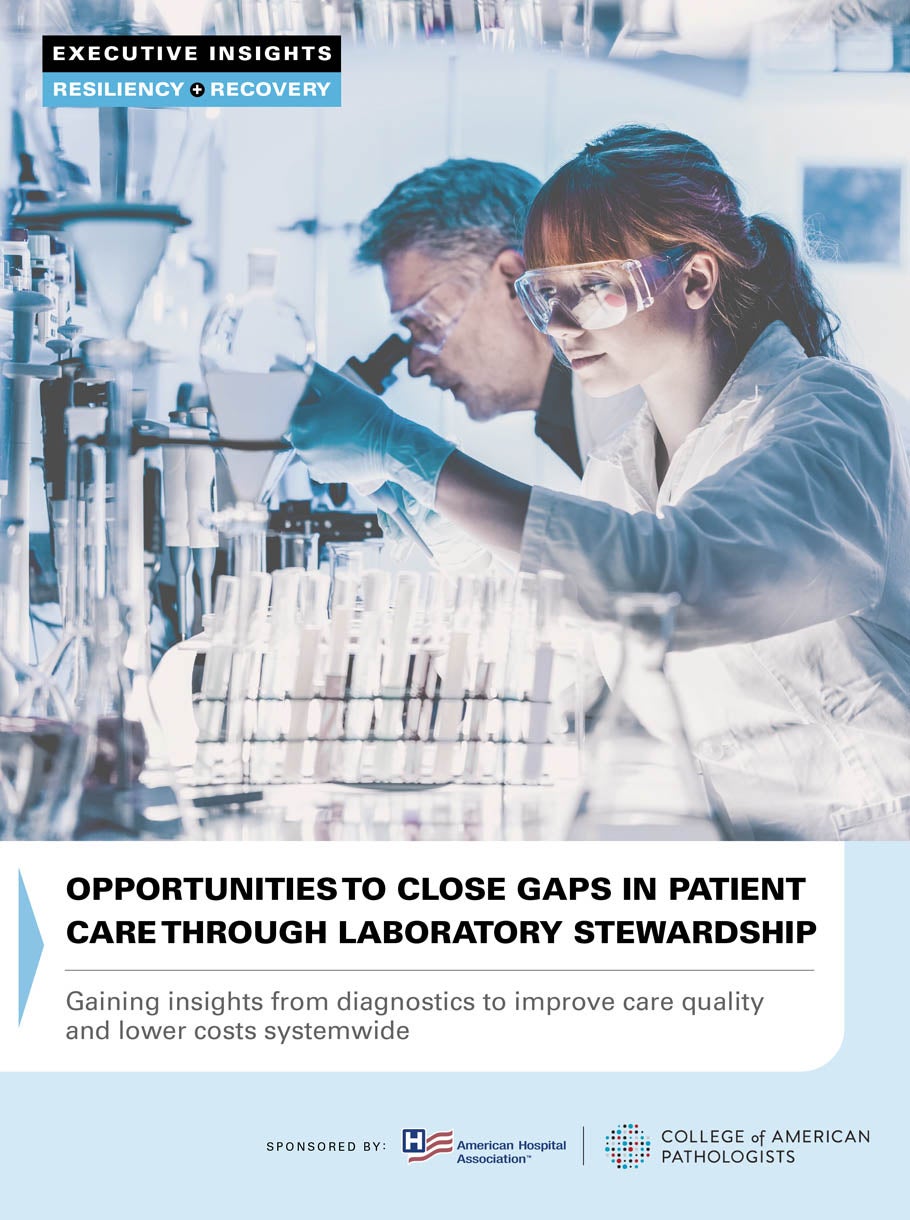
Opportunities To Close Gaps In Patient Care Through Laboratory Stewardship
Executive Dialogue
Gaining insights from diagnostics to improve care quality and lower costs systemwide
Today, 70% of medical decisions depend on laboratory test results, which represent 4% to 5% of overall hospital costs. Laboratory stewardship seeks to improve the health of patient populations and the patient experience while reducing care variation; streamline clinical decision support to improve provider satisfaction; and lower health care costs by avoiding over- and under-testing. The COVID-19 pandemic highlighted laboratory services-underuse opportunities in chronic-disease management and in communities facing inequities of care. This executive dialogue explores the key elements in a successful laboratory stewardship program that promote evidence-based care to improve quality metrics and financial performance.
8 Ways to Advance the Effectiveness of your Laboratory Stewardship Program
- Set goals that are effective, efficient, timely and patient-centered. Develop a good clinical oversight function to optimize care or reduce the cost of care.
- Evaluate opportunities in reference lab spend, laboratory formularies, and review of order sets to eliminate redundancies and unnecessary tests.
- Understand the governance in your hospital or health system. To optimize care or reduce the cost of care, you need a culture of change in the hospital to standardize laboratory operations.
- Pathologist-led laboratory stewardship matches care to science and avoids the overuse of ineffective care and underuse of effective care.
- Cultivate physician champions. Enlist executive leader sponsorship and influential medical leaders who have credibility with the medical staff to advocate for buy-in.
- Identify staff who work with day-to-day processes to generate ideas for process improvement. Often laboratory directors and managers see opportunities to improve your hospital laboratory operations.
- Build a multidisciplinary team that includes finance and information technology. Review plans with finance for the positive or negative impact on the return on investment. Build a relationship with information technology to modify orders sets in the electronic health record, and develop analytics and scorecards.
- Analyze the data and the outcomes. After analyzing your data, identify opportunities to optimize utilization and improve outcomes.
Participants

Donna D. Cooper, MS, MBA
Senior Director, Product Solutions
Quest Diagnostics

Andrew Fletcher, M.D., MBA, CPE, CHCQM, FCAP
Founder
Eutilogic Consulting

Mohiedean “Mohi” Ghofrani, M.D., MBA
System Laboratory Medical Director
PeaceHealth

Brian R. Jackson, M.D., MS, FCAP
Medical Director, Business Development, Support Services and IT
ARUP Laboratories

Moderator:
Bob Kehoe
Manager, Content Development, AHA Center for Health Innovation
American Hospital Association
AHA Executive Dialogue Series
Gain insights from the C-suite and health care leaders on the most pressing issues and transformational strategies.








